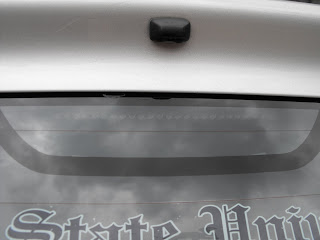So I bought various LEDs from superbrightleds.com and have been seeing which one is the brightest. I got a couple different ones:
Viewing Angle
360 8mm (RL8-R25-360)
120 1200mcd (RL5-R12120)
45 3500mcd (RL5-R3545)
30 8000mcd (RL5-R8030)
I am really interested in how the viewing angle affects the brightness.
The order from top to bottom (360, 120, 45, 30).
Same order, farther away. Like all my junk? lol.
These images do not look like the LEDs look in real life.... I think the 45 degree LED looks the brightest, well perceived brightness.
I replaced the 120 degree LEDs with the square high flux LEDs. I think the 45 degree LEDs look the best out of the bunch. Time to buy more LEDs!























